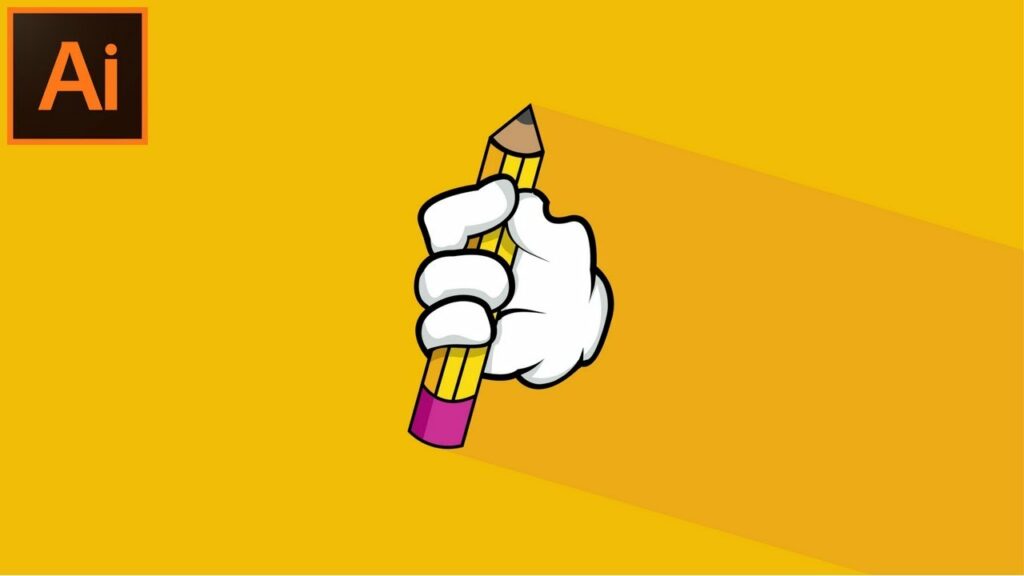Enlightening Pathways: A Comprehensive Guide to Crafting Vector Education Illustrations in Adobe Illustrator

Introduction:
Education is the cornerstone of society, and visual communication plays a pivotal role in conveying complex concepts, inspiring curiosity, and fostering learning. In the digital age, Adobe Illustrator stands as a powerful tool for educators, designers, and illustrators seeking to create engaging and informative illustrations that captivate learners of all ages. Whether you’re illustrating textbooks, educational materials, or digital learning resources, mastering the art of creating vector education illustrations in Adobe Illustrator opens up a world of possibilities for visually enhancing the learning experience. In this comprehensive guide, we’ll embark on a journey to explore the techniques and tools needed to craft vector education illustrations, empowering you to create captivating visuals that educate, inform, and inspire.
Chapter 1: Research and Conceptualization
Before diving into the creation process, it’s essential to conduct thorough research and conceptualize your illustration. Define the educational objectives and target audience for your illustration, then gather reference materials such as textbooks, educational websites, and visual aids to inform your design. Consider the key concepts, themes, and messages you want to convey through your illustration, and brainstorm creative ways to visualize them effectively. Pay attention to details such as age-appropriateness, clarity, and cultural sensitivity to ensure that your illustration resonates with your audience and enhances the learning experience.
Chapter 2: Setting Up Your Illustrator Document
With your research and concept in hand, it’s time to set up your Adobe Illustrator document. Create a new document with dimensions and resolution suitable for your intended output, whether it’s print-based or digital. Consider the orientation and aspect ratio that best fits your composition, whether it’s portrait or landscape. Organize your workspace by creating layers for different elements of your illustration, such as background, foreground, and text, to facilitate easy editing and manipulation.
Chapter 3: Sketching and Planning
Before diving into digital illustration, it’s helpful to sketch out your ideas on paper or using digital sketching tools. Roughly outline the composition, placement of elements, and overall flow of your illustration. Experiment with different layouts, perspectives, and compositions to find the most effective visual representation of your educational content. Once you’re satisfied with your sketch, use it as a guide for creating the initial framework of your vector illustration in Adobe Illustrator.
Chapter 4: Drawing and Creating Illustrative Elements
With your sketch as a guide, begin drawing and creating the illustrative elements of your education illustration in Adobe Illustrator. Utilize the pen tool, shape tools, and drawing tablet to create precise and detailed vector shapes and objects. Focus on capturing the essence of your educational content, whether it’s depicting scientific concepts, historical events, or mathematical principles. Pay attention to details such as proportions, perspectives, and visual hierarchy to ensure clarity and comprehension.
Chapter 5: Adding Text and Annotations
In addition to visual elements, incorporate text and annotations into your education illustration to provide context and enhance understanding. Utilize the type tool to add labels, captions, and explanations to identify key elements, highlight important information, and reinforce learning points. Experiment with using different fonts, sizes, and styles to distinguish different types of text and enhance readability. Align and position text strategically to complement the visual elements and guide the viewer’s eye through the illustration.
Chapter 6: Applying Color and Visual Enhancements
Once the basic elements of your education illustration are in place, it’s time to apply color and visual enhancements to bring your illustration to life. Use the fill and stroke options in Adobe Illustrator to apply color to objects and shapes, using a cohesive color scheme that enhances readability and comprehension. Experiment with using gradients, patterns, and textures to add depth and visual interest to your illustration, creating a dynamic and engaging visual experience. Pay attention to details such as contrast, saturation, and harmony to ensure that your color choices effectively convey the intended message and mood of your illustration.
Chapter 7: Incorporating Interactive Elements (for Digital Illustrations)
If you’re creating a digital education illustration for interactive use, consider incorporating interactive elements such as animations, buttons, and hyperlinks to enhance engagement and interactivity. Utilize Adobe Illustrator’s capabilities to create dynamic and interactive illustrations that allow users to explore and interact with educational content in a meaningful way. Experiment with using animation effects to illustrate processes and concepts, and use hyperlinks to provide additional information or resources for further exploration.
Chapter 8: Fine-Tuning and Reviewing
Once your education illustration is complete, take time to fine-tune and review it to ensure accuracy, clarity, and effectiveness. Use the zoom tool to inspect your illustration at various levels of magnification, checking for any inconsistencies or errors. Review the composition, layout, and visual hierarchy to ensure that the educational content is presented in a logical and intuitive manner. Solicit feedback from colleagues, educators, or target audience members to gather insights and perspectives on how to improve your illustration further.
Chapter 9: Saving and Sharing Your Education Illustration
Once you’re satisfied with your education illustration in Adobe Illustrator, it’s important to save and share your artwork for sharing or distribution. Save your Illustrator document in a compatible file format, such as AI or PDF, to preserve the vector properties of your artwork. If you’re creating artwork for digital use, consider exporting it as an SVG file for scalability and compatibility with web browsers. For print-based projects, export your artwork as a high-resolution raster image in formats such as JPEG or PNG.
Conclusion:
Crafting vector education illustrations in Adobe Illustrator is a journey of creativity, collaboration, and innovation, offering endless possibilities for visually enhancing the learning experience. By understanding the techniques and tools needed to research and conceptualize, set up your Illustrator document, sketch and plan, draw and create illustrative elements, add text and annotations, apply color and visual enhancements, incorporate interactive elements (for digital illustrations), fine-tune and review, and save and share your education illustration, you’ll be able to create captivating visuals that educate, inform, and inspire learners of all ages. So grab your stylus, set your sights on the canvas, and let Adobe Illustrator become your trusted ally for creating engaging and informative education illustrations that illuminate minds and inspire discovery.




